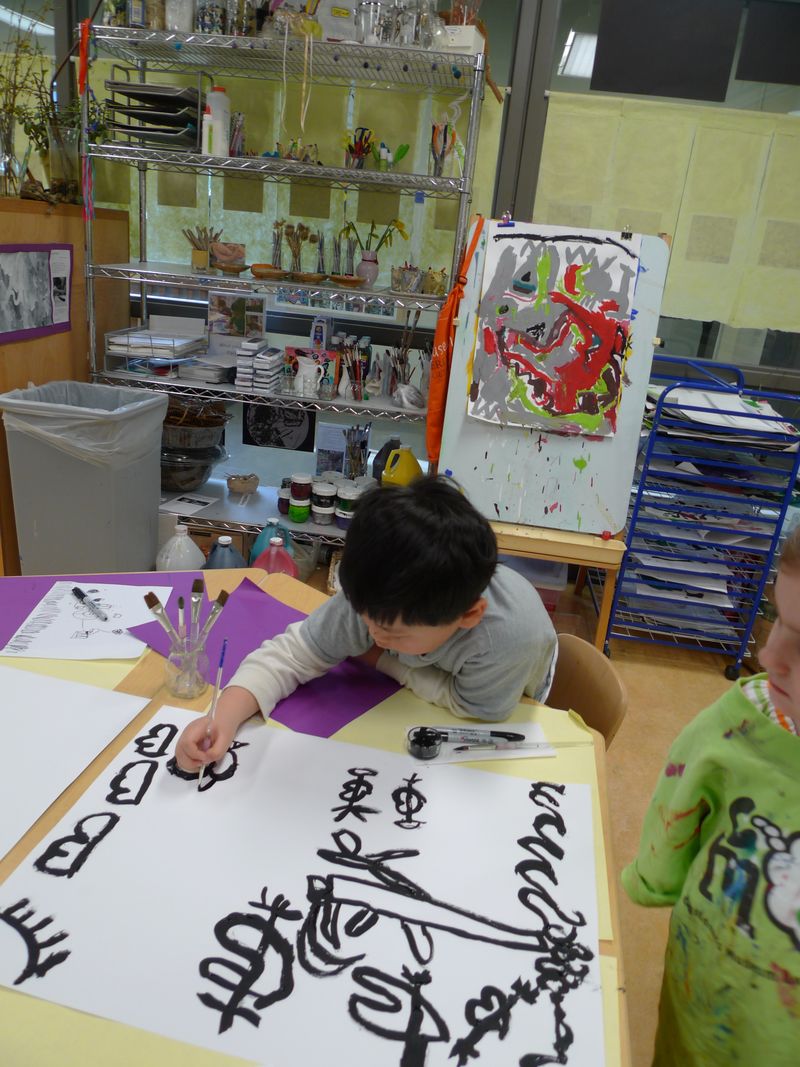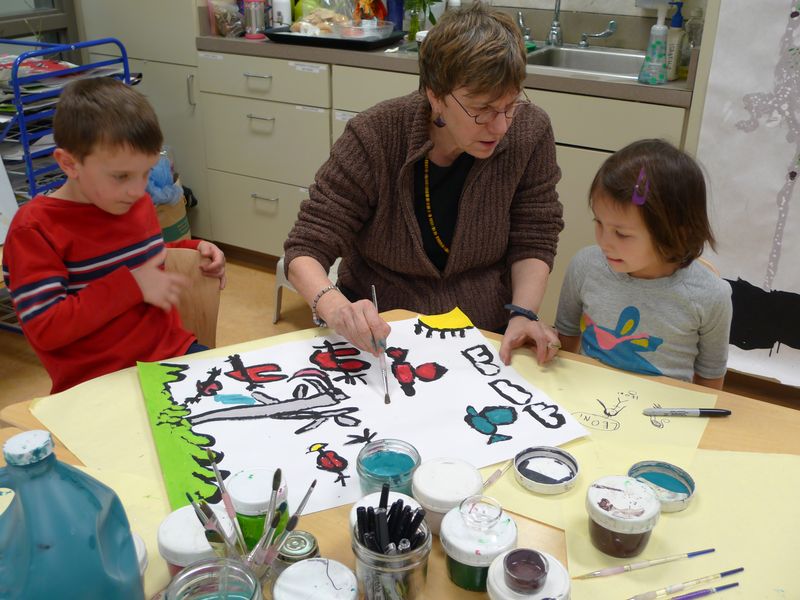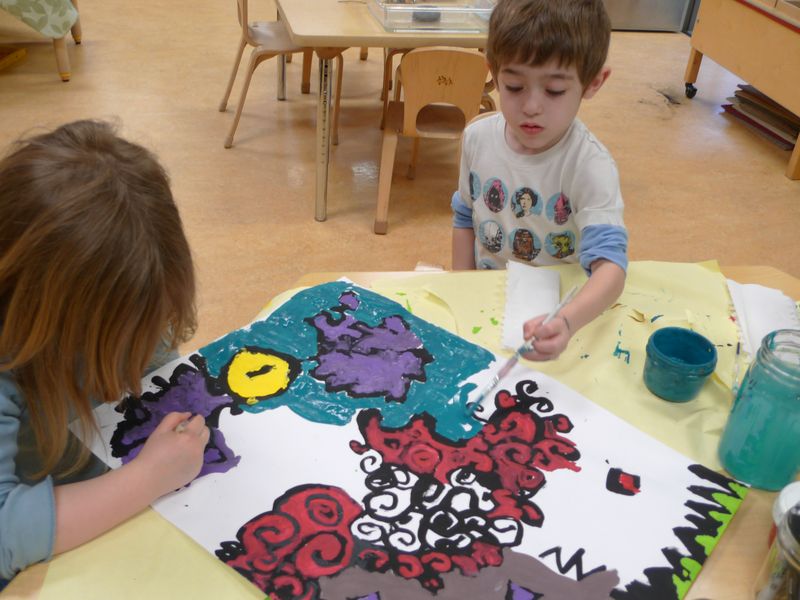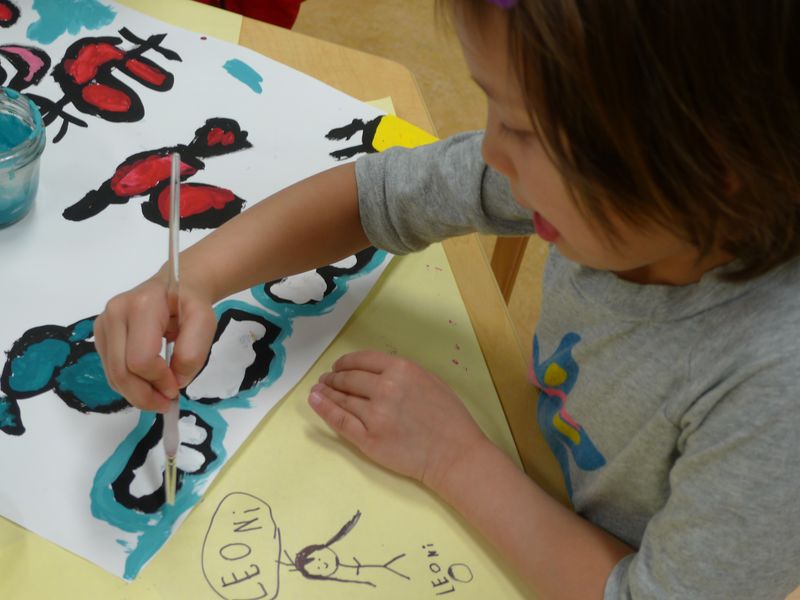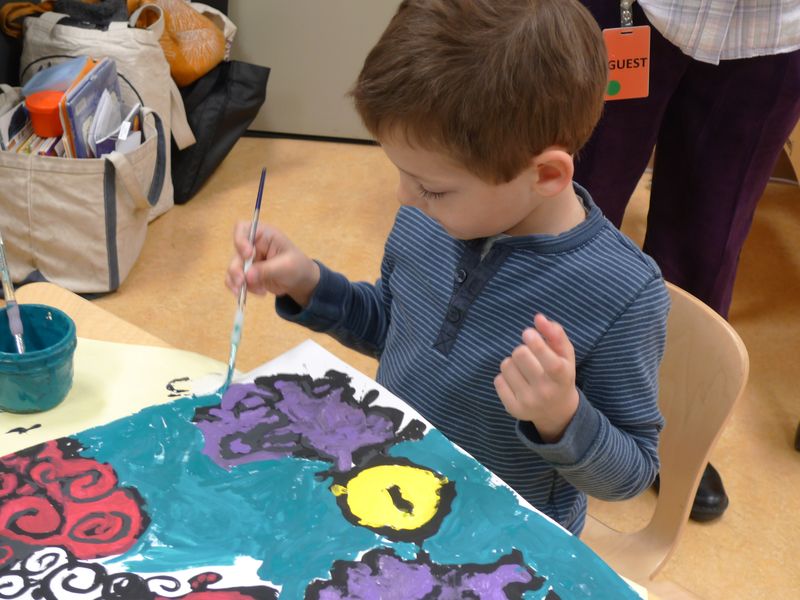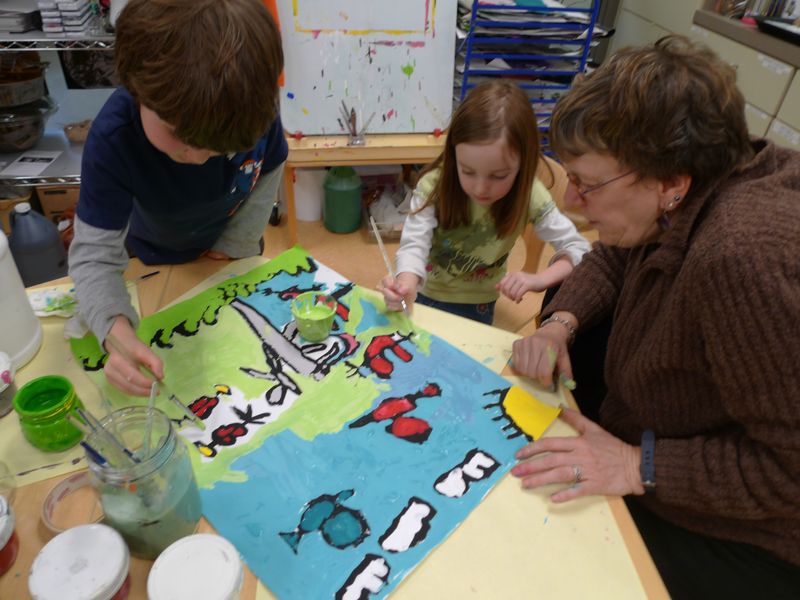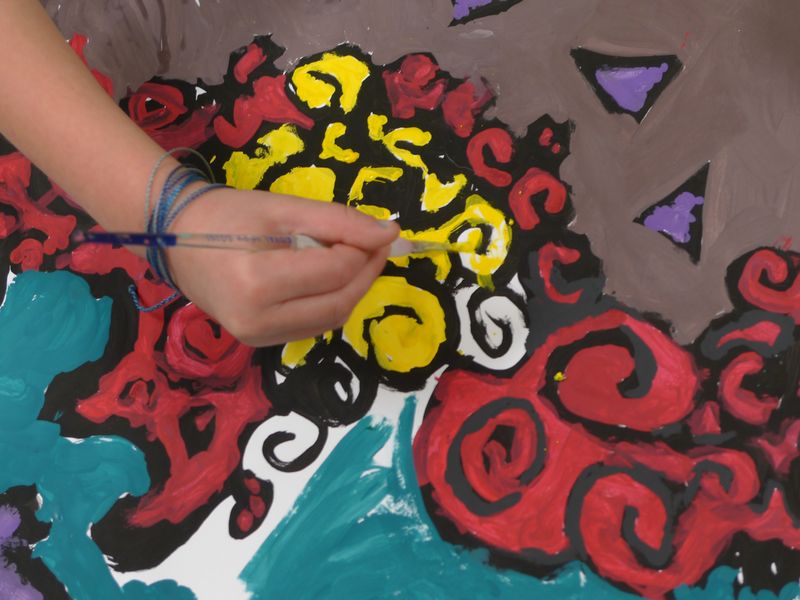How can the tree not know?
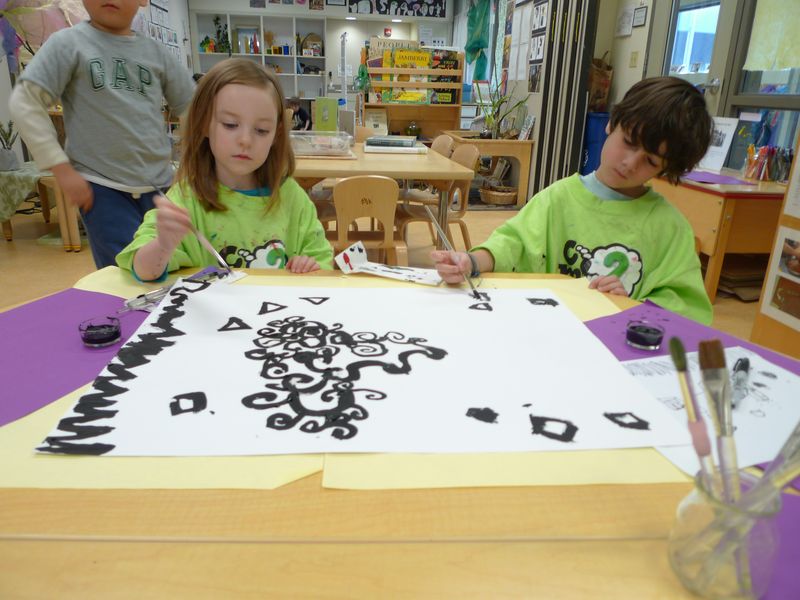
The following post is from our Early Kindergarten, serving children ages 4 – 6 years:
I have always had tempera paints in my classroom from my first year of teaching many years ago in a sixth grade classroom, to three year olds, and every age in between. I have offered paints, encouraged the use of them, taught care for the materials, and listened as the children painted. This was good, but a few weeks ago I had a chance to watch a master at work. Elizabeth Craig, our studio specialist, was in our classroom helping the students with a very important painting. We were making paintings to show how much we cared about the tree that we had helped plant, that mysteriously ended up out of the ground and subsequently died. The children were all contributing to the painting which was painted first just with black lines and was now being filled in with color. These paintings had the unique quality of being collaborative – shared works of art. Collaborative paintings are exciting, and at times can be challenging because everyone's ideas and contribution effects the final outcome. These paintings were tricky on two levels – navigating the skill of painting around the black lines as well as navigating the different choices students wanted to make. It was a joy to watch Elizabeth work with the children on both of these challenges.
As student after student came over to spend time with the painting and with Elizabeth, I was amazed at the constant support she offered. She was so grounded in what would make the act of painting easier and more successful – suggestions just flowed in ways that built the children up by giving them what they needed at that moment to succeed in a difficult job, but also by giving them skill and knowledge for the future. Here are a few of the gems – ideas and words I saw and heard her use…
“You want to be painting like a turtle – SO slow.”
“When painting near black line, turn your brush to the side and pull the brush to you rather than push it.” The she would follow up with, “Pull. Remember to pull towards you.”
“If you have to lean in your chair, you should stand up!”
“Do you see the black line here? Do you see it?”
This was my personal favorite because I could hear myself saying this but with a completely different tone of voice. Elizabeth made no assumption that the child saw the line. The line was right in front of a child and he was struggling to paint around it and she, so gently, brought his focus to the line pointing to it as you might to a sign in the distance. With her words and actions she created shared understanding – so that they both started from the point of ‘this is the line we are talking about, the one we are trying to paint around’. There was no judgement, no assumption – just a willingness to start with the most basic and move forward. I know I would have worked from the assumption that the child saw the line – maybe now I won't, because, really, who knows what another person is focusing on?
She notices a child losing focus. She gently takes the brush out of his hand and says – “stop for a minute,” – so gentle. She offers to him the chance to be done and he takes it. How nice to have someone notice, to know when to keep pushing gently and to know when being done is not only just the right thing, but is totally acceptable.
I often talk with children about different size brushes. Elizabeth took the brushes in question and flattened them on the paper as if she was going to paint with them but without paint to offer visual information about what kind of line they would paint (see photo third from the top). She says, “Which would be thick, which would be thinner, which one do you think you want?” So simple.
Then, one of the last children in the class comes to paint. There are a few chunks left to paint in. Students before her have painted the background around the scene. The sky is blue and the grass is green. She sits down to paint one of the ‘sky’ areas and says she wants to paint it green. I happen to walk by as Elizabeth is saying with curiosity and a twinge of confusion, “You want to paint it green? Do you really think it should be green?” (Again, tone is so important here. Elizabeth is not asking a leading question that gives the ‘clue’ that she doesn’t think it should be green. She is asking genuinely – trying to understand what the child is thinking.) The child responds yes, she really thinks it should be green. I wonder what Elizabeth will do; I wonder what I would do. I try to imagine what it will look like with the sky part blue and part green and I am struggling to do so. I am pulled away and when I return, part of the sky is green – a beautiful light green (not the kelly green I had immediately imagined). Even though I don’t know if she could envision the green herself, she trusted that the child could envision it and she, as the teacher, believed in and trusted the child’s vision – even when the stakes were high on a collaborative classroom painting.
Instead of leading, she decided to ask questions, to suspend judgement and follow the child's lead while holding a vision of the whole out of respect for the work of the whole.
The children were so proud of their work; they could feel how much care went into all that slowing down. One child made this clear in the statement he made after working for a long time painting in the colors. He looked the paintings over and said,
"How can the tree not know we love him?!”
R.S., age 5
Written by Marcy Berkowitz, Opal School Teacher Researcher


